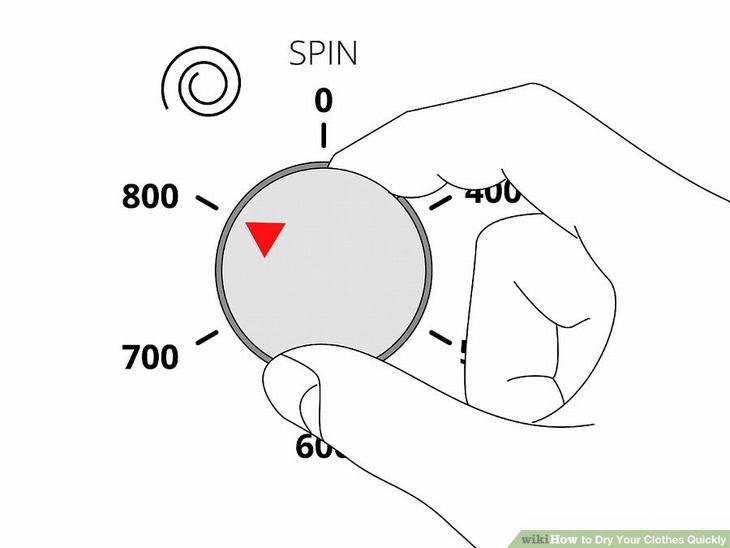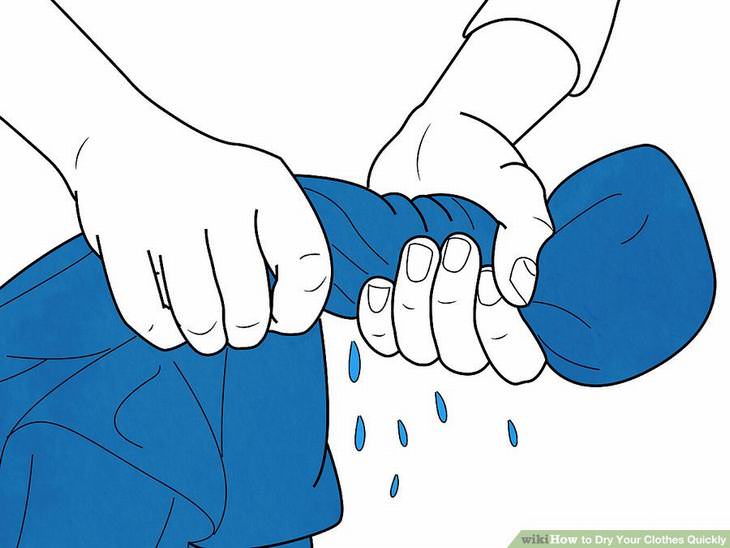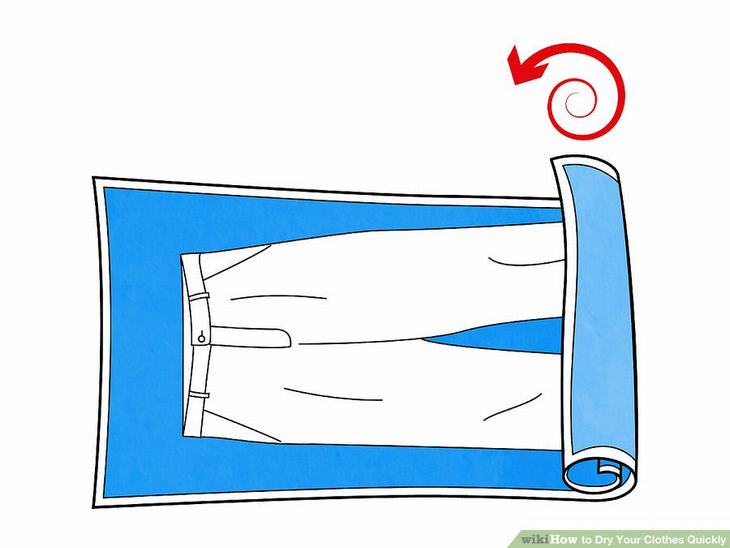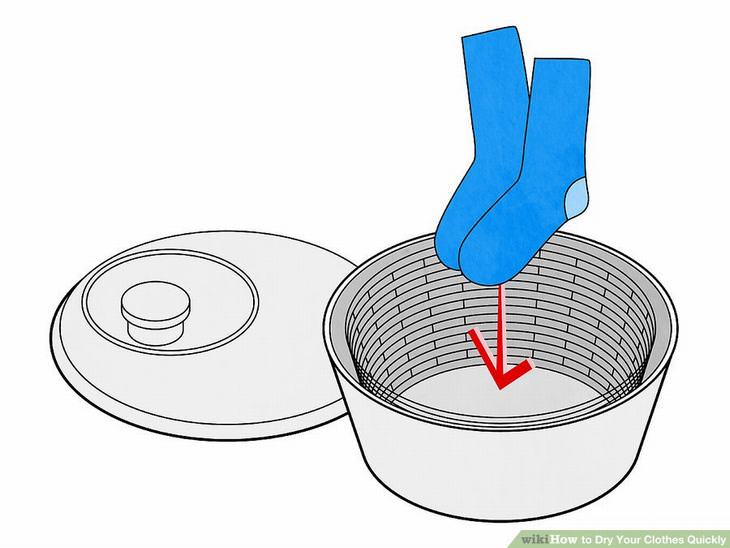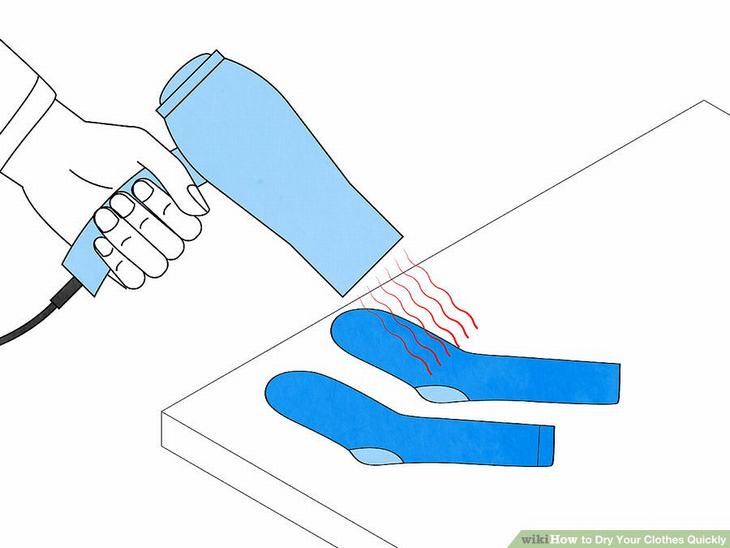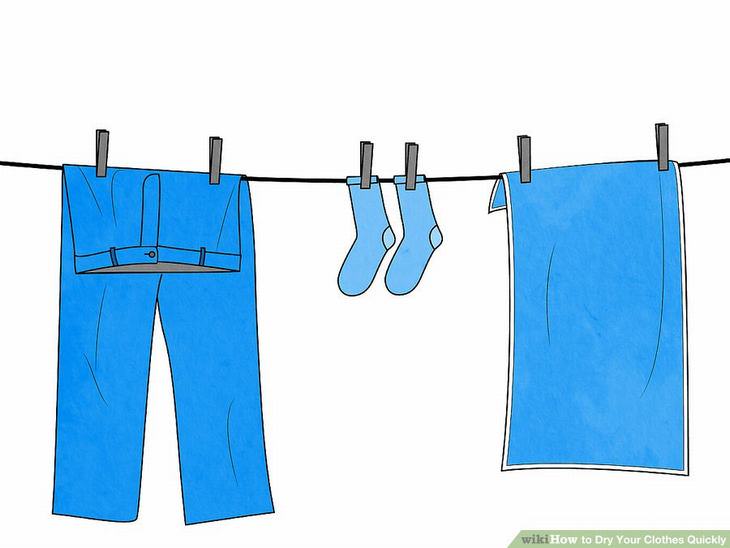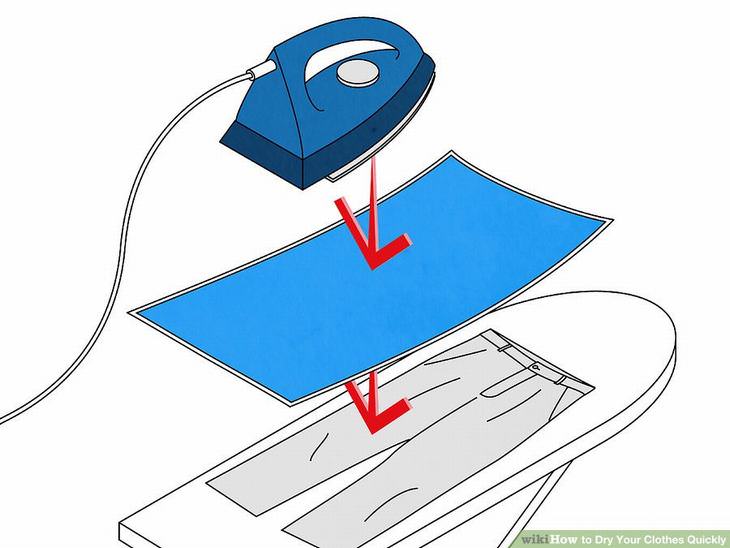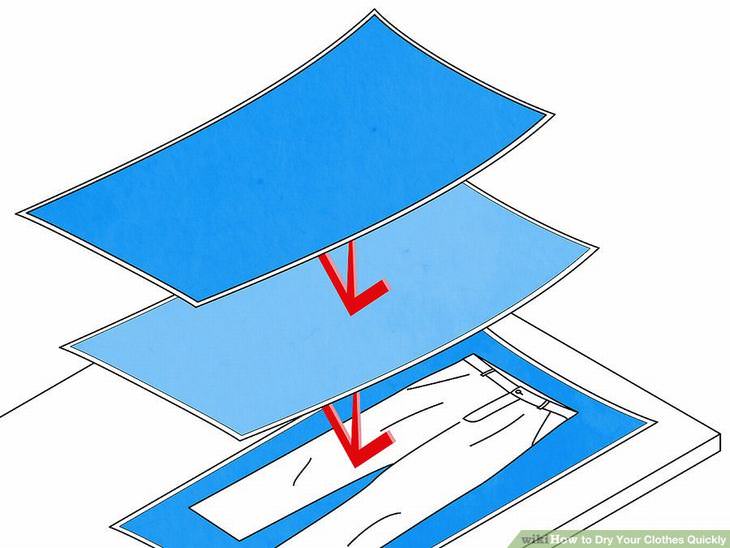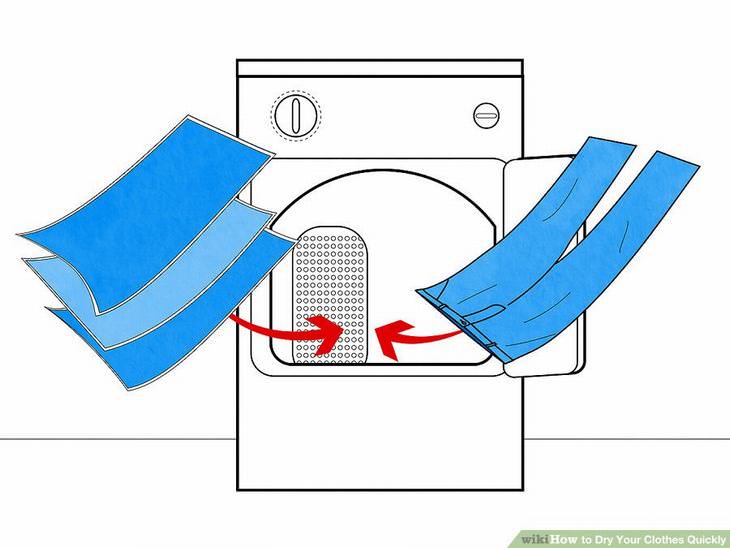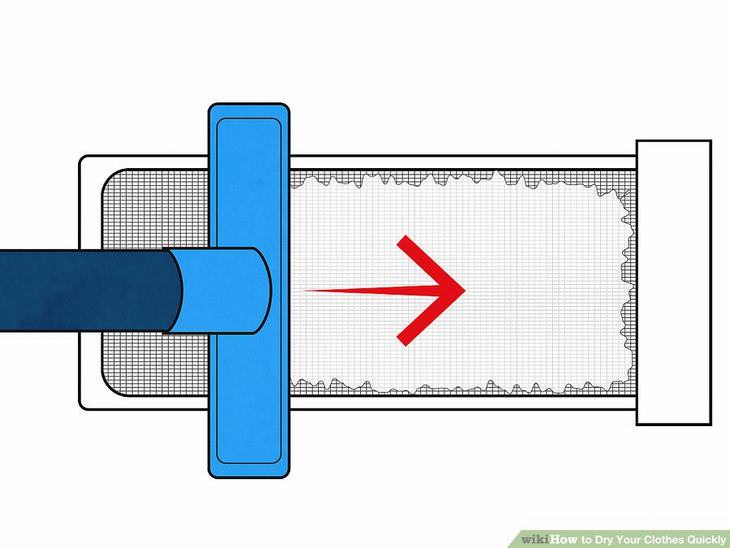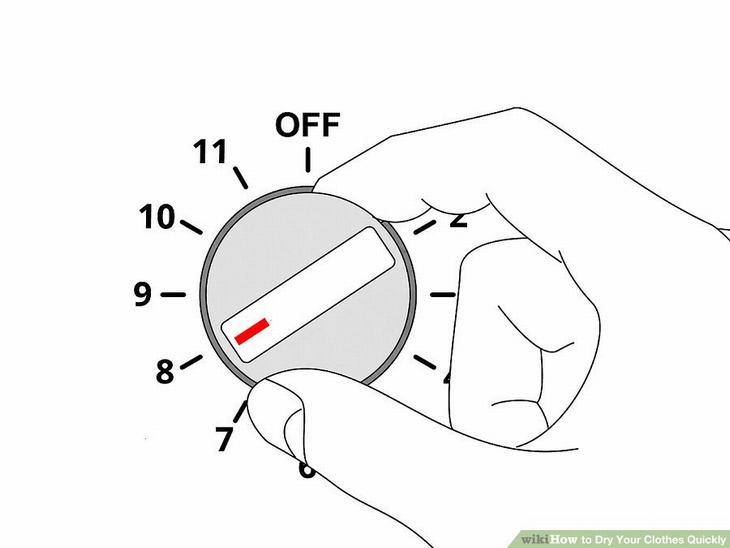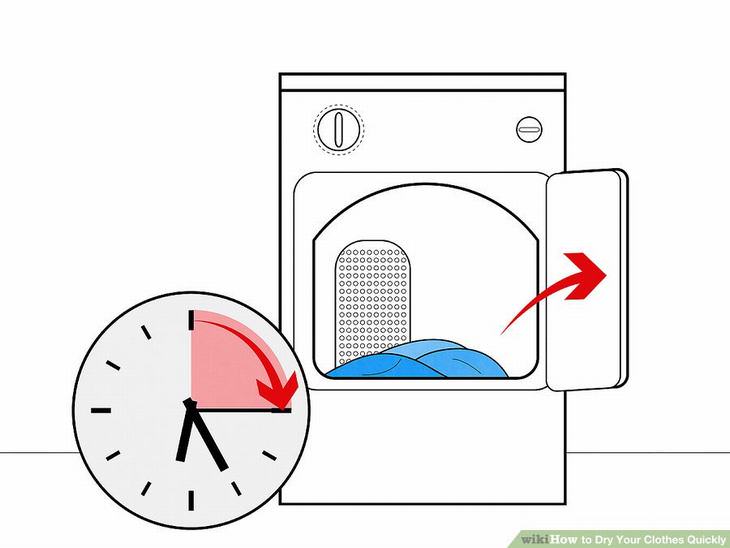1. Use a high spin wash: If your clothes are in the wash, get them to dry more quickly by setting the washing machine on a high spin setting. This will remove as much water as possible from your clothes. In case you're worried about your bills, fear not. According to the Energy Saving Trust, the increased energy used to do this is negligible compared to the energy it takes to run a standard tumble dryer.
2. Wring your clothing out so that it dries more quickly: To do so, hold the garment firmly in both hands then squeeze, twist and knead the fabric to wrench out as much water as possible. Be careful not to pull too hard, as this may stretch the fabric. Do this before drying your clothes, whether you intend to tumble-dry or hang-dry. The more excess water is removed, the quicker a garment will dry.
3. Twist the clothing into a towel to absorb the water: Lay the wet garment on top of a large, fluffy towel. Roll up the towel tightly with the clothing inside. Twist the bundle, starting at one end and rolling methodically, working your way along until the entire towel is tightly twisted. This will squeeze the excess water out of your clothes and into the towel.
4 Try salad spinning your clothes: Put your wet garments into a salad spinner. This serves as a quick pre dryer, or a low energy version of high spin wash. While you'll need to let your clothes hang out to dry afterwards, the spinning should make the process substantially faster.
Drying Without a Dryer
1. Use a hairdryer: Use a handheld blow-dryer to quickly dry your clothing. Start by wringing out the wet garment and lay it on a clean, dry surface. Set the hairdryer to warm or a high setting then work your way slowly around the entire surface of the garment, including the front and back, inside and out, until it's completely dry. Be careful to not point the blow-dryer on one spot for too long as this could cause the garment to catch fire.
2. Use a clothesline or drying rack: Hang your clothing on a line, or use a drying rack. While a line is generally fastest, it's not always practical. Hang each item individually so that it has the space and ventilation to dry quickly. Be sure to flip the garments periodically to ensure an even dry. If possible, place the line near a heat source, keeping them a few feet away from a fireplace, radiator, boiler or furnace. If placing flammable materials near heat, don't let your clothes get too hot as you may risk a fire.
3. Use an iron and a towel: Lay the wet garment on an ironing board, placing a thin towel on top. Iron the towel firmly and thoroughly on high heat. Turn the garment over so that you press both sides. This will add some warmth into the fabric enabling the towel to become absorbed with some of the moisture. Putting a hot iron directly onto a wet piece of clothing may stretch and damage the fabric, rendering the garment unwearable.
Tumble-Drying with Towels
1. Dry a wet garment with a few clean, dry towels: Adding towels to your load will help absorb some of the moisture from the wet clothing, and the whole batch may dry more quickly as a result. The more towels you use, the quicker your clothes will dry. This trick works best when you only need to quickly dry one or two pieces of clothing. Bear in mind that the more wet garments you add to the cycle, the less effective the towels will be.
2. Put your garment in the dryer along with the towels: Just add two or three pieces of wet clothing to the towels, but nothing too heavy. Bear in mind that towels tend to be lint-heavy, so there is a chance that the lint will build up on your garment. If this is a concern, use T-shirts made of cotton instead. Also, adding dryer sheets, can reduce the chances of having lint on towels.
3. Clean out the lint trap: When lint builds up it can prevent the dryer from moving air efficiently, making it work harder and using more energy to dry clothes. Depending on the brand of your dryer, the lint trap will either be at the top of the dryer, or inside the door. Locate the trap and pull out the screen. If it is covered in lint, it is already blocked. Pull it away or scrape the lint from the screen using your fingernails. You may need to use a vacuum.
4. Dry the clothes: Load the wet garments and dry towels, though make sure that the dryer isn't overfull. Then turn the dryer on to the highest heat setting that is safe for the garment. Generally, low heat is used for delicates and other thin clothing.
5. Wait 15 minutes or longer: At this stage, your garment should be mostly dry, If not, put it back in and run the dry cycle for a few minutes more. This could roughly be about + 5 minutes. Be sure to remove the dry towel, which may no longer be so dry.

